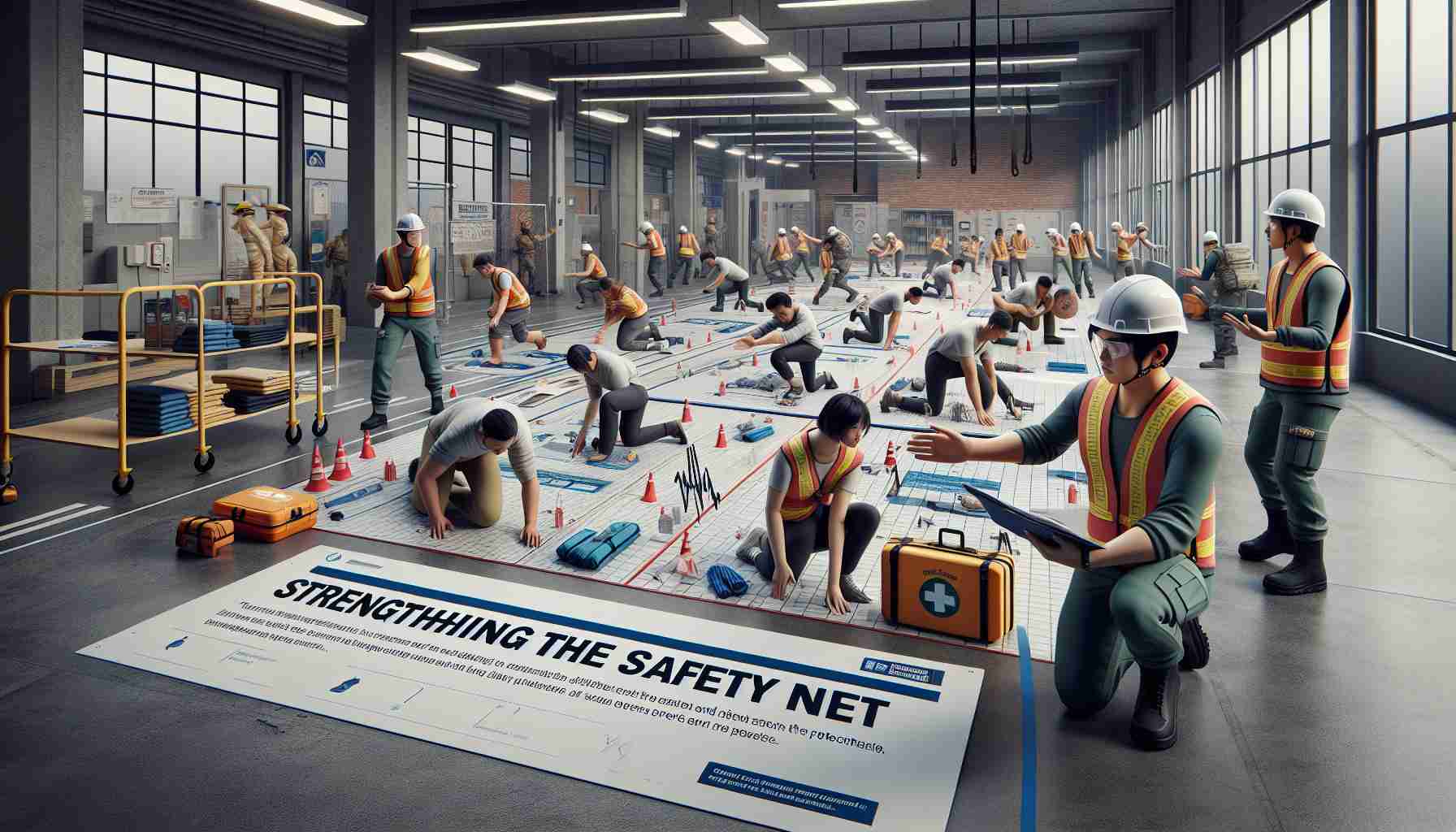Intensive Emergency Preparedness Exercise in Tokyo
In a recent exercise simulating a powerful earthquake with a magnitude of 7.3 striking Tokyo’s 23 wards, emergency responders from various sectors came together to test their preparedness. Following the mock tremor, which hypothetically impacted areas like Saitama City’s Minami Ward and Kawaguchi City with violent shaking, over 450 personnel participated in a comprehensive 24-hour response drill.
This training included local police, Self-Defense Forces, and critical utility companies, along with private enterprises under disaster support agreements with the prefecture. The main aim was to enhance collaboration between public and private sectors in managing stranded commuters and ensuring the efficient supply and transport of essential goods.
Leveraging lessons learned from past events like the Noto Peninsula earthquake, the exercise focused on building decision-making skills among participants to address challenges such as aftershocks, landslides, and identifying isolated communities as time progressed.
During a simulated disaster management meeting, leaders provided updates on transportation disruptions and the deployment of Disaster Medical Assistance Teams (DMAT). The exercise leader emphasized the importance of prioritizing rescue efforts and maintaining close coordination with all relevant agencies. The prefecture’s disaster response official expressed satisfaction with the collaboration achieved through face-to-face interactions during the training, reaffirming the critical nature of preparedness in safeguarding lives.
Societal Implications of Emergency Preparedness in Urban Centers
The recent intensive emergency preparedness exercise in Tokyo serves as a critical reminder of the growing need for cities worldwide to bolster their disaster readiness. As urban populations swell—over 55% of the world’s population now resides in urban areas—the risk of catastrophic events, such as earthquakes, floods, or pandemics, escalates, necessitating a robust response framework. The cooperative strategies demonstrated in Tokyo’s drill are not just beneficial locally; they set a benchmark for global emergency management practices.
Future trends suggest that as climate change intensifies natural disasters, urban centers will increasingly rely on public-private partnerships for comprehensive disaster response. This collaboration is essential in creating resilient infrastructures, such as advanced warning systems and adaptable transportation networks, ensuring that essential resources can be dispatched rapidly to affected regions, thereby mitigating chaos.
Additionally, the impact of such exercises extends to cultural shifts within communities. By fostering a culture of preparedness, societies can galvanize collective action, enhancing social cohesion and future resilience against unforeseen crises. Moreover, the environmental effects of preparedness, notably through the integration of sustainable practices in disaster response, will be pivotal as urban planners seek to navigate the complexities of eco-friendly development amidst a backdrop of potential disaster scenarios.
Ultimately, the long-term significance of these drills will likely resonate through improved survival rates, reduced economic loss, and a more informed public that understands the importance of preparedness—a lesson Tokyo’s recent exercise powerfully embodies.
Tokyo’s Bold Move: Enhancing Earthquake Preparedness through Intensive Drills
Intensive Emergency Preparedness Exercise in Tokyo
In a significant demonstration of commitment to disaster preparedness, Tokyo recently conducted an intensive emergency response exercise designed to simulate a powerful earthquake registering a magnitude of 7.3. This vital drill focused on ensuring readiness across the capital’s 23 wards, engaging over 450 emergency personnel from various sectors, including local police, Self-Defense Forces, critical utility providers, and private enterprises with disaster support agreements.
Key Features of the Emergency Exercise
The drill was meticulously planned to include realistic scenarios that reflected potential real-life challenges during a significant earthquake. Notable aspects of the exercise included:
– Two-Pronged Focus: The training emphasized both crisis response and the efficient management of logistics. Participants were geared towards addressing the needs of stranded commuters while ensuring that the supply and transport of essential goods remained uninterrupted.
– Collaboration between Sectors: The exercise aimed at enhancing collaboration between public agencies and private sector partners. This integration is crucial for developing a cohesive response strategy in the event of a real disaster.
– Realistic Simulations: Drawing insights from previous earthquakes, such as the Noto Peninsula incident, planners tested response teams on handling aftershocks, landslides, and the complexities of reaching isolated communities.
Pros and Cons of the Exercise
Pros:
– Improved Preparedness: Drills like this enhance the ability of emergency responders to act swiftly and efficiently during disasters.
– Enhanced Coordination: The focus on collaboration promotes a unified approach during emergencies, significantly improving outcomes.
– Community Engagement: Such exercises raise public awareness about disaster readiness and the importance of community resilience.
Cons:
– Resource Intensive: Comprehensive drills require significant resources and time, which could be allocated to other areas.
– Limited by Simulated Scenarios: While practical, simulations may not capture every variable present in a real disaster situation.
Insights and Innovations
The exercise underscored several critical insights and innovative approaches. Participants were encouraged to engage in decision-making processes that simulated real-life challenges. Leaders led discussions on strategic priorities such as initial rescue efforts and the deployment of Disaster Medical Assistance Teams (DMAT).
Trends in Emergency Preparedness
Recent years have seen a growing trend towards integrating technology in disaster response exercises. This includes utilizing real-time data to enhance situational awareness, communication tools to keep teams informed, and incorporating drone technology for aerial assessments of disaster-hit areas.
Challenges and Limitations
However, challenges remain. The psychological impact of prolonged drills can be demanding on first responders. Maintaining high morale and motivation during repeated exercises is key to ensuring sustained engagement in future drills. Additionally, there are logistical challenges in effectively training all personnel to adapt to the evolving nature of emergencies in urban settings.
Looking Ahead
As urban centers continue to grow and the risks of natural disasters increase, investing in comprehensive emergency preparedness initiatives is not just beneficial but essential. Experts advocate for ongoing training and the establishment of robust systems that facilitate immediate and effective responses.
For more information on disaster preparedness initiatives in Japan, visit Japan Government.
